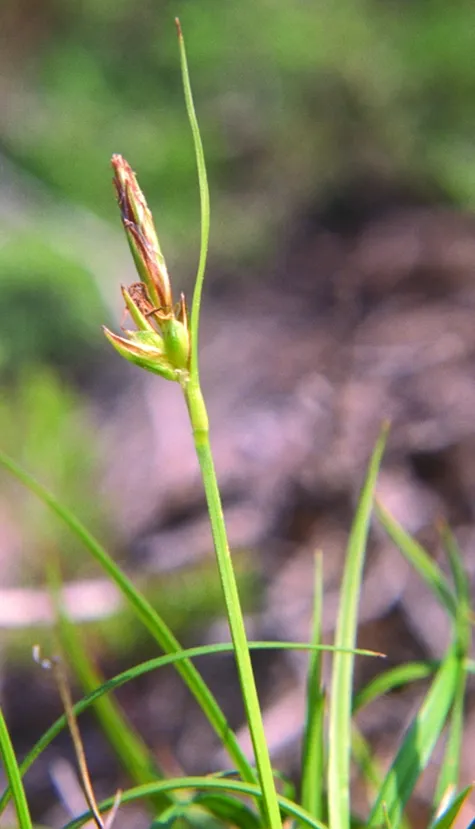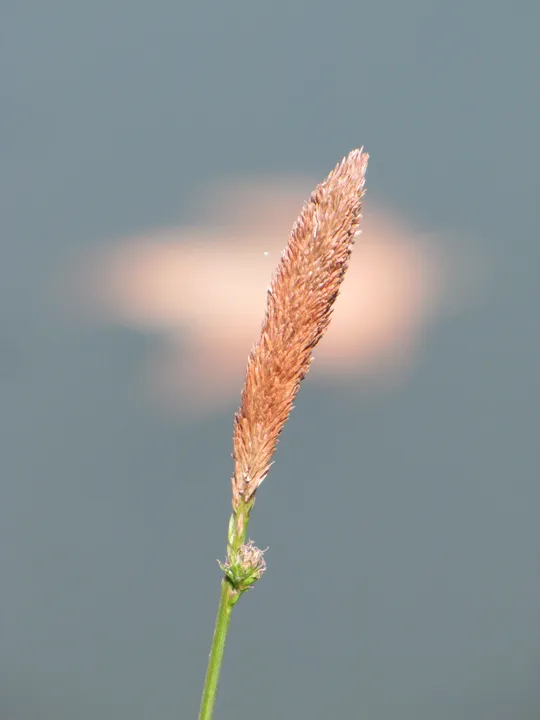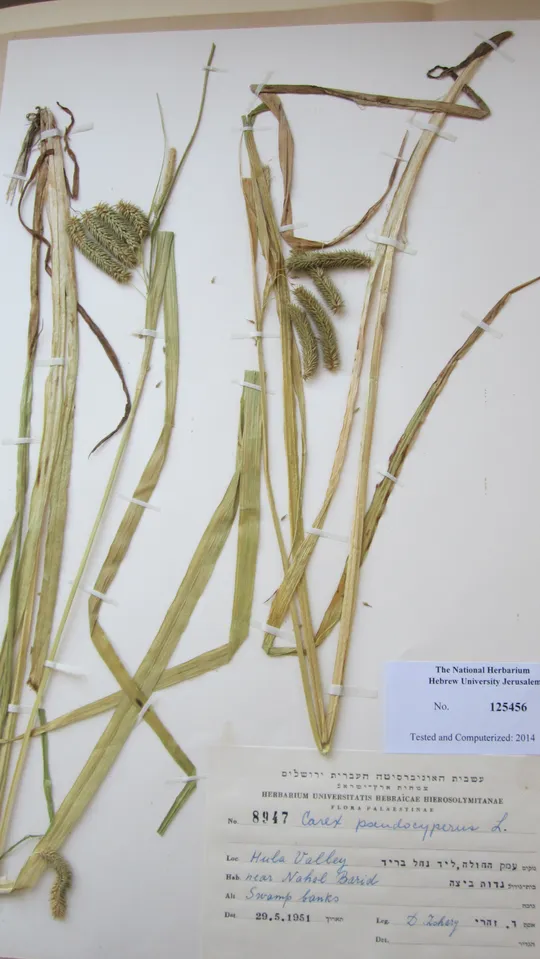Haller's Sedge, Low Sedge
Carex hallerana



Carex hallerana
grows only in the Judean Mountains region in Mevaseret Tsion area and on Mount Tayasim.
It was first collected in 1939 at Motsa Ilit, and since then was never found
again until 1986 (see Flora Palaestina, Vol. 4). In the 1990s, it was found at
En Tayasim and in the years 2002-2003, following the rare plant survey in the
Jerusalem area, it was also collected in the Castle National Park, in the Mount Tayasim
reserve, in Mevaseret Tsion and in Wadi Ma'oz Tsion descending to En Naqoba,
north of Kibbutz Tsova. All these sites are within an area of 10 square kilometers, and the distance between the
extreme sites is only 5.5 km
Sarcopoterium
spinosum scrubland on abandoned terraces on gray rendzina soil
and a mixed limestone and chalk substrate. It also grows together withThymus
capitatus on marl, e.g. Mount Tayasim.
In Cyprus and Turkey, the species also grows on scrubland and in open
woodlands. In Cyprus its growth up to an altitude of 1200 meters.
For the genus – see Carex pseudocyperus.
Carex
hallerana is the easiest to identify from among the Carex
species: it is short, has dense foliage and always grows away from water bodies,
unlike most Carex species that grow near water. C. pachystylis (that also grows away from water bodies) differs from the C.
hallerana in that it has only one
inflorescence at the head of the stalk (C. hallerana
has 2-3 inflorescences), and has no elongated bract.
•
Seven Carex hallerana
populations are known from four sites (each site has an area of 1 sq. km) all
located in one section, between Mevaseret Tsion and Mount Tayasim. Only the Mount Tayasim
site is located in a nature reserve, the rest are located on the western
fringes of settlements (Mevaseret Tsion) that are spreading westward rapidly
and threatening the existence of C. hallerana
in Israel.
•
The sites where C. hallerana
grows are popular with walkers and hikers, and trampling on Mount Tayasim and En Tayasim threaten the populations.
•
The number of plants
is very small. The total number of plants in all the populations along the
Jerusalem Hills is estimated at only 200. The number of plants on Mount Tayasim is estimated at 75 (Shir Vered).
A detailed field survey should be conducted in the
Mevaseret-Mount Tayasim area,
to define the boundaries of all the Carex hallerana populations and
determine their size. Two populations (in Wadi Ma'oz Tsion and mount Tayasim) should be selected for monitoring the species; the
population at the Castle National Park (where only three plants were counted) should
be rehabilitated and expanded. A learning center focusing on C. hallerana
as a red species should be established there. Care should be taken to leave
open scrubland and prevent exclusion of C. hallerana
by competing plants.
Carex
hallerana a broad distribution throughout the Mediterranean
Basin, in Western Asia and the temperate zone of Europe: from Spain and the
Maghreb Countries in the west through France, Italy and the Balkans, and also
in Tunis and Libya in the southern Mediterranean. It is found throughout
Atlantic and Central Europe and in the Caucasus and Black Sea countries. In the
Middle East, it grows in northern Turkey, Anatolia, Southern Turkey and the
Aegean islands, Cyprus, northwestern Iran, Afghanistan and the Syrian-Lebanese
coast. It is absent from Jordan and northern Iraq. It is an exotic species in
North America and New Zealand.
Carex
hallerana is a very small perennial Cyperaceae that grows only in one region in Israel – the
Judean Mountains. A northern peripheral plant that is one of the rarest and
most threatened plants in Israel. The Safdie plan for the development of the
western entrance to Jerusalem will destroy it completely. The ecological reason
for the fact that they grow precisely on only these four sites in Israel and
precisely on this section is not clear. The proximity of the C.
hallerana sites was a factor in determining the red number of the species.
Current Occupancy Map
| 1000 squre meter pixel | 5000 squre meter pixel | 10000 squre meter pixel | |
|---|---|---|---|
| number of observations | 0 | 0 | 0 |
| in total pixels | 0 | 0 | 0 |
| Family | Cyperaceae |
| Classification | On the endangered species list |
| Ecosystem | Mediterranean |
| Chorotype | Mediterranean (Southern Euro – Siberian and Western Irano Turanian) |
| Conservation Site | Mount Tayasim |
| Rarity |
1
4
6
|
|---|---|
| Vulnerability |
0
2
4
|
| Attractiveness |
0
0
4
|
| Endemism |
0
0
4
|
| Red number |
1
4.2
10
|
| Peripherality | N |
| IUCN category | DD EW EX LC CR EN VU NT |
| Threat Definition according to the red book | Endangered |
 Based on:
Based on:






